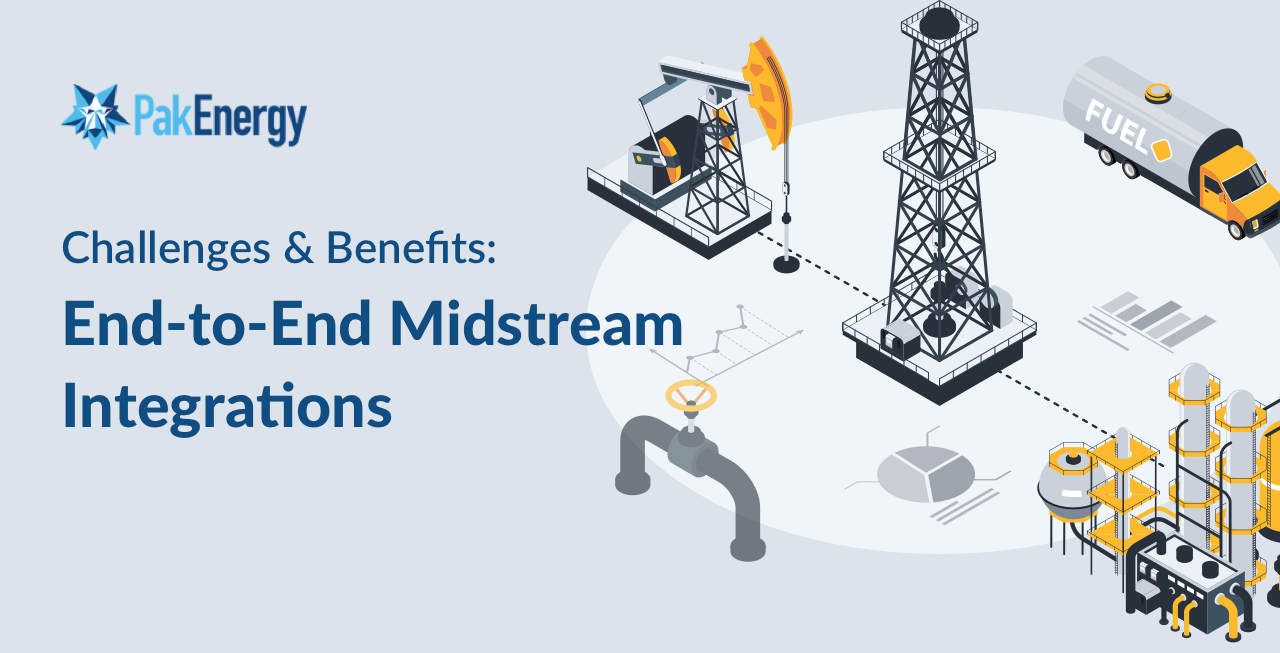
1. Introduction
Oil and gas companies face growing market pressures, fluctuating commodity prices, regulatory demands, and the need for efficient operations. Digital solutions in midstream plant accounting have become essential. Integrated platforms enable seamless workflows from operations through financial reconciliation. Business automation delivers greater accuracy, faster closes, and a competitive edge.
2. Understanding Integrated Midstream Platforms
Integrated midstream platforms combine real-time measurement data, plant accounting, contract management, and financial analytics into a unified system. Core technologies include:
- Cloud-native measurement systems delivering precise volume tracking and discrepancy alerts
- Plant accounting modules that automate financial workflows—including contracts, settlements, invoicing, and tax calculations
- Enterprise integrations using APIs for transactional and master data exchange
These technologies support unified data flows between field operations and finance, enabling greater operational control and regulatory compliance.
3. Business Automation in Oilfield Services
For service providers, business automation encompasses digital management of work orders, invoicing, resource allocation, and compliance reporting. With real-time measurement data feeding into accounting, PakEnergy’s platform:
- Reduces manual entry and errors
- Accelerates month‑end processes from days to hours
- Provides transparent audit trails with traceable calculations
This leads to improved billing accuracy, faster revenue recognition, and better field‑office coordination.
4. Combining Integration and Automation for Maximum Impact
Linking measurement, accounting, and financial reporting transforms operational workflows. PakEnergy’s platform delivers:
- Real-time reconciliation of volume and financial data
- Automated month‑end closing tasks and dashboards that expose bottlenecks
- System‑managed tax and regulatory reporting tailored to regional requirements
Companies using these tools report faster, more accurate operations and reduced operational risk.
5. Critical Capabilities of Modern Oil and Gas Software
Leading platforms like PakEnergy should include:
- Real-time measurement integration: Automatic data flow enhances accuracy and revenue protection
- Rapid financial close: Month‑end processing in hours, with reruns possible within minutes
- Custom formula engine: Enables user-defined contract and pricing structures
- Transparent audit trail: Full visibility into every financial calculation and change
- Scalability and cloud-native design: Supports asset growth with minimal overhead
- Regulatory compliance tools: Includes tax engines and preconfigured reporting templates
6. Strategic Business Value
Deploying integrated automation systems generates measurable ROI:
- Significant reduction in month-end durations and manual effort
- Higher accuracy through automated calculations and auditability
- Stronger compliance posture with built-in regulatory reporting
Beyond immediate savings, these platforms enable finance teams to shift from transactional work to strategic planning and performance analysis.
7. Roadmap to Successful Implementation
- Assess current systems: Map existing silos in measurement, accounting, and operations
- Choose the right vendor: Prioritize cloud-native architecture, API frameworks, and industry-specific functionality
- Plan phased integration: Start with critical measurement-to-accounting flows, then expand to contracts and tax reporting
- Enable user adoption: Train finance and operations teams on real-time dashboards, traceability tools, and workflow automation
8. The Future of Digital Midstream Operations
Emerging technologies will reshape the sector. Expect increased adoption of:
- AI and predictive analytics: For anomaly detection in volumes and operations
- Edge-to-cloud processing: Supports real-time data capture at remote sites
- Expanded business intelligence: Turns operational data into actionable strategy
- Enhanced cybersecurity: Protects sensitive financial and operational data
PakEnergy is positioned to evolve with these trends, and reinforce its role as a digital transformation partner.
